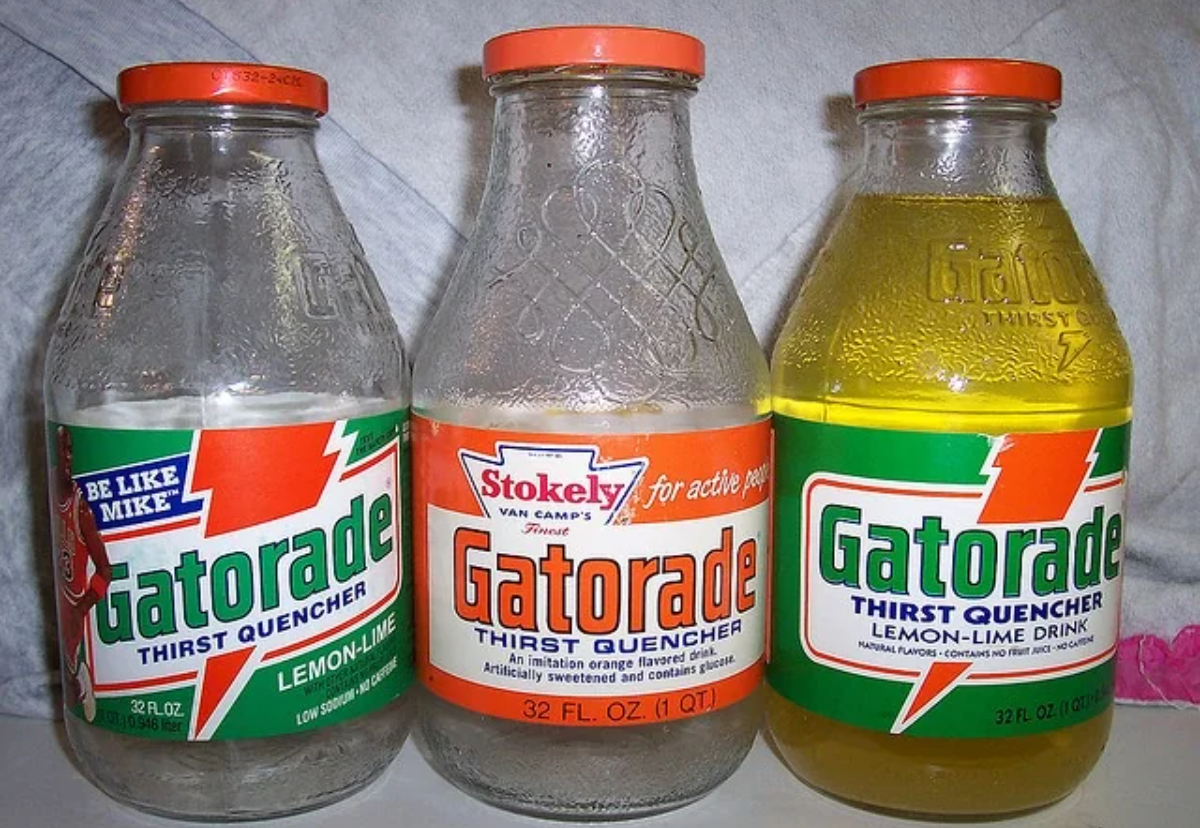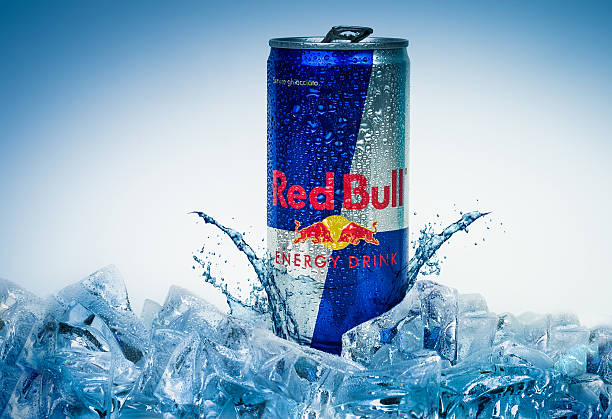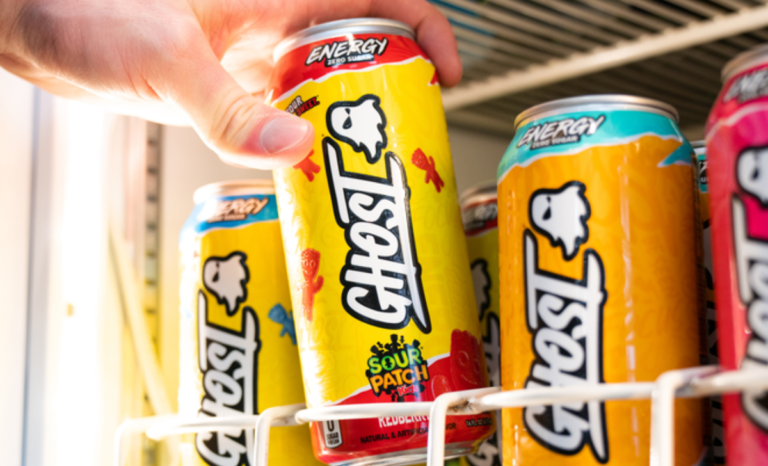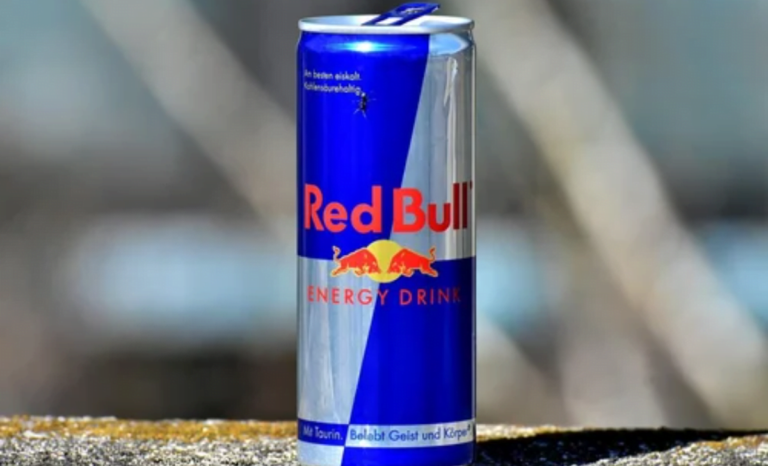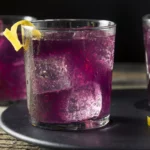Gatorade, a household name synonymous with hydration in the world of sports, has a rich history that dates back to its inception. In its early days, Gatorade was not only a game-changer in the sports beverage industry but also had a distinct look – it was often found in classic glass bottles.
But When Did Gatorade Stop Using Glass Bottles?
Gatorade stopped using glass bottles in 1998, transitioning to plastic bottles for a more practical and consumer-friendly packaging approach. This shift reflected a broader trend in the beverage industry towards lightweight, cost-effective, and environmentally conscious solutions.
A Brief History of Gatorade Bottles
Gatorade, the iconic sports drink, has a long and fascinating history, and a big part of that history is its packaging.
From its humble beginnings in clunky glass bottles to the sleek and convenient plastic ones we know today, Gatorade’s bottles have come a long way.
In the early days, Gatorade bottles were straightforward in design, emphasizing functionality over aesthetics.
They typically had a cylindrical shape with a screw-on cap. The emphasis was on providing a reliable and easy-to-use container for athletes to quickly hydrate during sports activities.
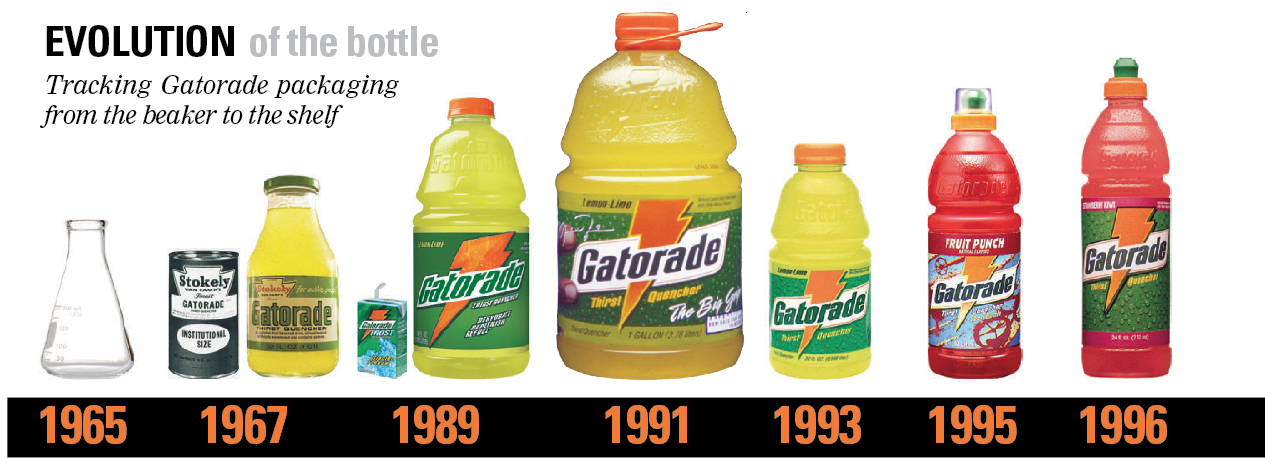
As Gatorade gained popularity, particularly on the sidelines of sports events, the brand introduced the squeeze bottle. This design allowed athletes to quickly and easily consume the beverage without the need to unscrew a cap.
The squeeze bottle featured a softer plastic, making it convenient for users to control the flow of the drink with a gentle squeeze.
The most iconic Gatorade bottle shape emerged with a contoured design. This shape not only made the bottle more ergonomic, fitting comfortably in the hand, but also added a distinctive visual identity to the brand.
The contoured shape became synonymous with Gatorade, creating a recognizable and memorable silhouette on store shelves and sports arenas.
Gatorade bottles are often adorned with ridges, strategically placed along the sides. These ridges serve a functional purpose by enhancing grip.
A notable feature of Gatorade bottles is the dent or concave shape at the bottom. This design innovation serves multiple purposes.
First, it reinforces the structural integrity of the bottle, preventing it from collapsing under the pressure of a powerful squeeze.
Second, it contributes to stability when placed on flat surfaces, minimizing the risk of tipping over.
The Golden Age of Gatorade Glass Bottles(1965-1998)
In 1965, Gatorade was born in the labs of the University of Florida, created to help athletes combat the scorching Florida heat and intense training sessions. Back then, the only option was glass bottles.
During what we can refer to as the “Golden Age” of Gatorade, roughly spanning from 1965 to 1998, the brand embraced glass bottles as the primary means of delivering its refreshing concoction to consumers.
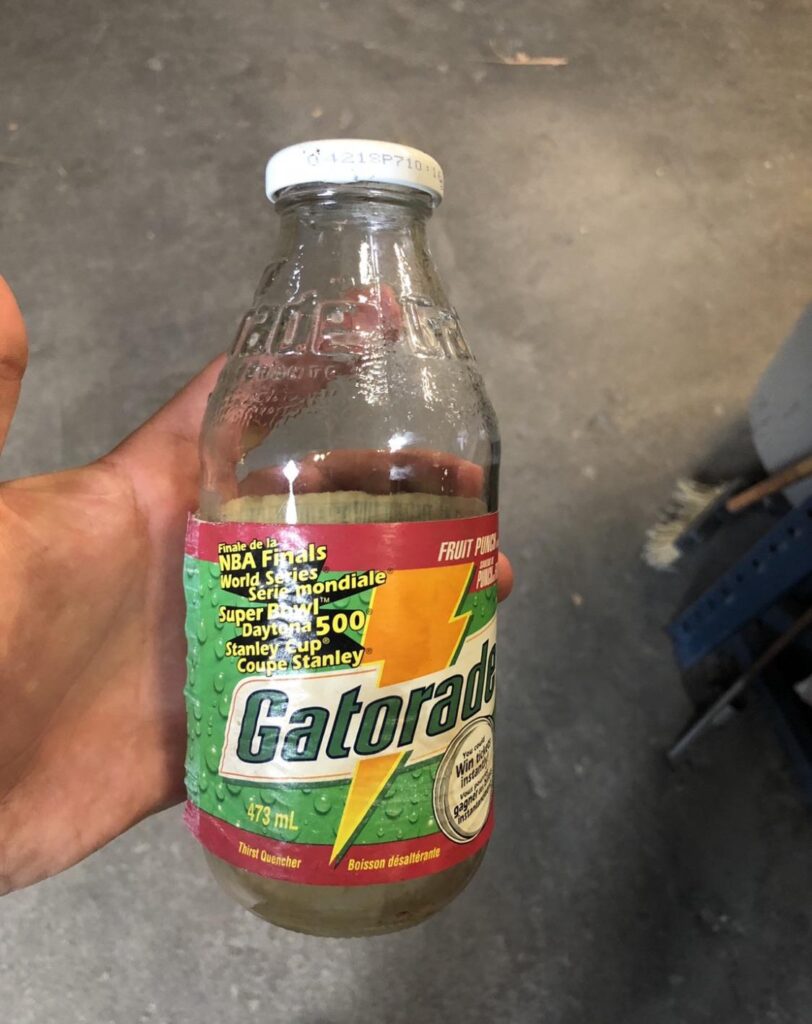
These glass bottles came in various designs and sizes, each bearing the Gatorade logo proudly. The durability of glass bottles was evident, but they weren’t without drawbacks – their weight posed challenges for those on the move.
Gatorade enthusiasts fondly recall the distinct feel of these glass bottles, each sip delivering a unique experience.
The cultural significance of Gatorade glass bottles is immeasurable, as they became a symbol of victory and rejuvenation on and off the field.
Nostalgia runs deep for those who remember the days when cracking open a Gatorade glass bottle was a moment of celebration.
Despite their charm, the environmental impact of glass bottles was a consideration even during this golden era.
The transition away from glass would eventually be influenced by a growing awareness of sustainability and a desire for more practical packaging.
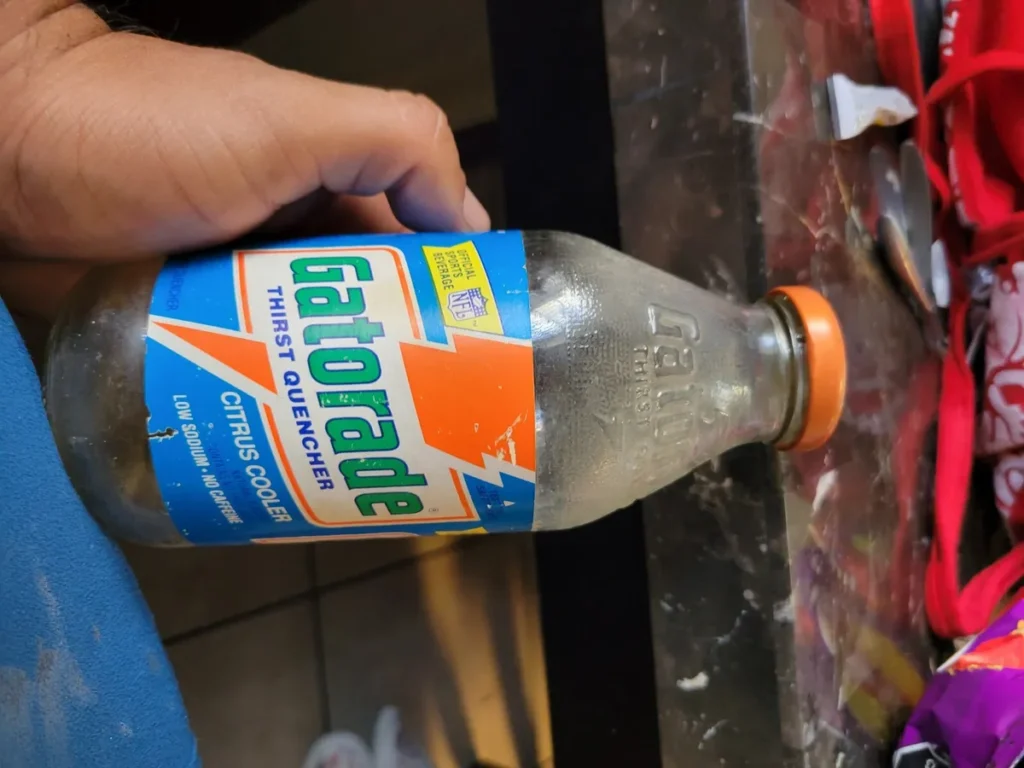
The Shift to Plastic: When Did Gatorade Stop Using Glass Bottles(1998-Present)
In 1998, a notable transformation unfolded in the world of sports beverages as Gatorade, the iconic hydration brand, underwent a significant shift in its packaging strategy. Also check out like Gatorade Vs Vitamin water for hydration choices.
During this era, Gatorade bid farewell to the classic glass bottles that had been a staple of its identity for decades.
Embracing the spirit of innovation and adaptability, Gatorade transitioned to plastic bottles, marking a pivotal moment in its history.
This shift not only reflected the brand’s commitment to meeting the changing needs of its consumers but also signaled a broader industry trend towards more practical, cost-effective, and environmentally conscious packaging solutions.
Read:
Why Did Gatorade Switch From Glass To Plastic?
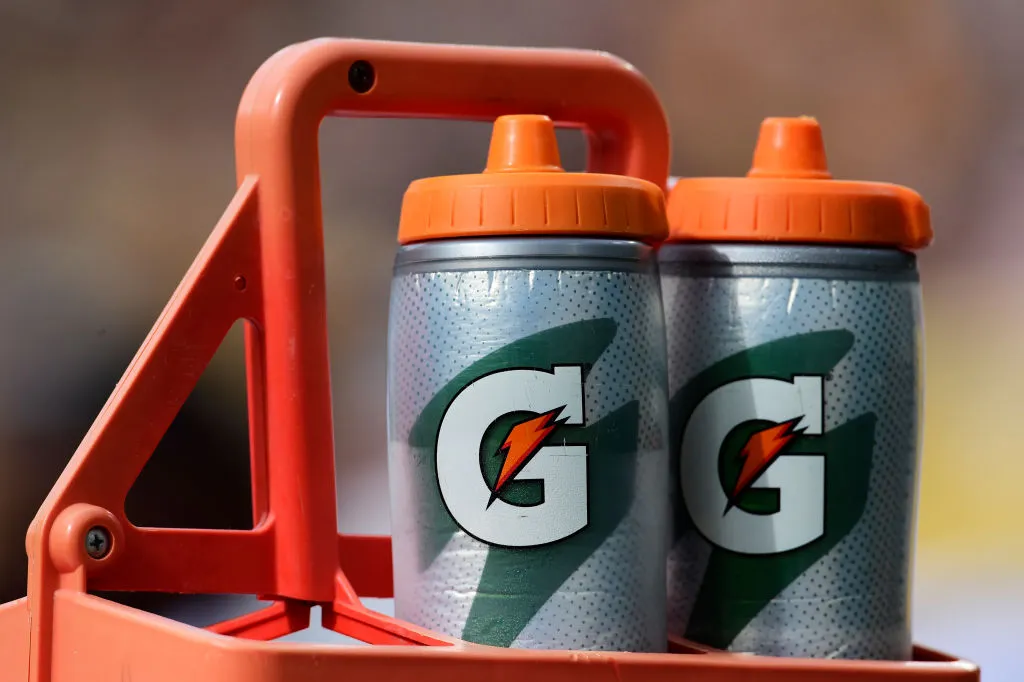
Here are few reasons Why Gatorade Switched From Glass To Plastic
Consumer Preferences: Portability and Convenience
One of the primary drivers behind Gatorade’s shift from glass to plastic bottles was a response to changing consumer preferences.
Plastic bottles offered a level of portability and convenience that resonated with an audience increasingly on the move. Unlike glass, plastic bottles were lightweight, making them easier to carry during physical activities and on-the-go situations.
The shift aligned Gatorade’s packaging with the needs of its active consumers, who valued the practicality of a lightweight and easily transportable container.
Cost Effectiveness of Plastic Bottles
Cost effectiveness played a crucial role in the decision to transition to plastic. Manufacturing plastic bottles proved to be more economical than producing glass ones.
The production, transportation, and distribution of plastic bottles were not only more efficient but also incurred lower costs at every stage of the supply chain.
This shift allowed Gatorade to optimize its resources and allocate funds more strategically, ensuring the beverage remained accessible to a broad consumer base.
Safety Considerations: Plastic vs. Glass
In the realm of sports and physical activities, safety is paramount. Plastic bottles emerged as a safer alternative to glass, especially in settings where breakage could pose risks.
The durability of plastic reduced the likelihood of accidents associated with shattered glass, making Gatorade a safer hydration choice for athletes, sports enthusiasts, and anyone enjoying the beverage in dynamic environments.
The transition to plastic bottles reflected a commitment to ensuring the well-being of Gatorade consumers.
Discover more: Does Gatorade Have Red Dye 40 in it?
Environmental Considerations and Recycling Initiatives
As environmental awareness grew, so did the importance of sustainable packaging. Plastic bottles, despite their initial environmental concerns, became a more environmentally friendly choice as recycling initiatives gained traction.
Plastic is highly recyclable, and advancements in recycling technologies have made it a viable option for reducing the ecological impact of packaging materials.
Gatorade’s transition to plastic bottles reflected a commitment to aligning its practices with evolving environmental expectations and participating in the broader industry shift towards sustainability.
Versatility in Design and Innovation
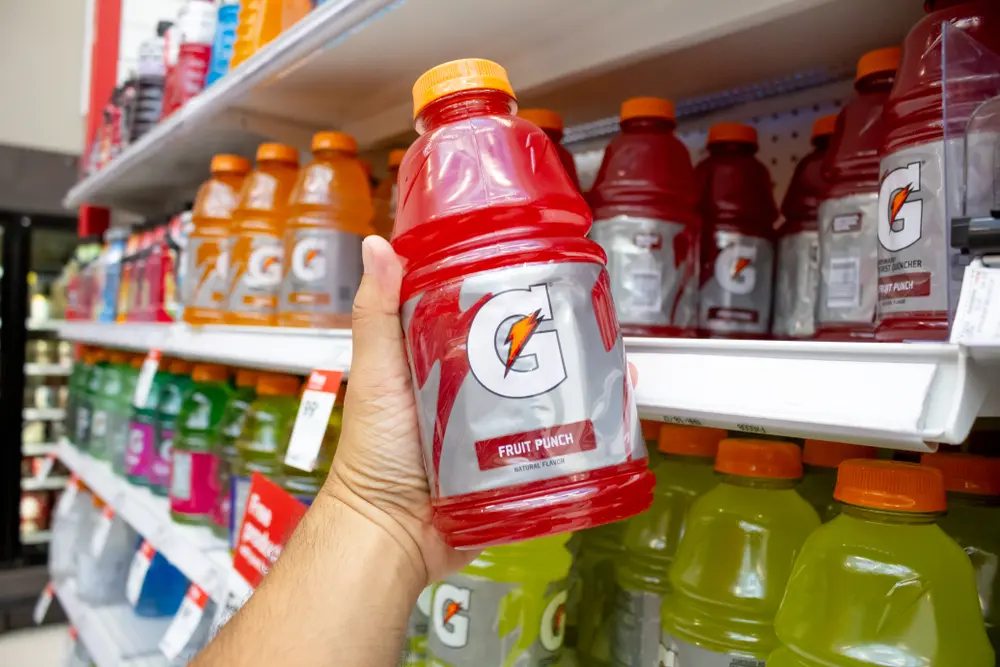
Plastic offered Gatorade a canvas for innovation in packaging design. Unlike the relatively rigid nature of glass, plastic allowed for a variety of shapes, sizes, and cap designs.
This versatility facilitated branding opportunities and creative marketing strategies. The ability to experiment with packaging design not only contributed to Gatorade’s visual appeal on store shelves but also allowed the brand to tailor its products to different market segments and occasions.
Reduced Environmental Footprint
While it might seem counterintuitive given environmental concerns with plastic, the overall life cycle analysis of plastic bottles demonstrated a reduced environmental footprint compared to glass.
The lighter weight of plastic bottles contributed to lower transportation emissions, and advancements in recycling technology further lessened the long-term impact on the environment.
This reduction in environmental impact became a significant factor in Gatorade’s decision to embrace plastic as the preferred packaging material.
The Legacy of Gatorade Glass Bottles
Although Gatorade bid farewell to glass bottles in its regular lineup, the legacy of these vintage containers endures.
Collectors and enthusiasts still treasure original Gatorade glass bottles, seeing them not just as containers but as pieces of history.
Gatorade occasionally reintroduces glass bottles for special editions or promotional campaigns, tapping into the nostalgia associated with the brand’s early years.
The influence of glass bottles on Gatorade’s brand identity is undeniable. While the practicality of plastic may have won the day, the enduring appeal of the classic glass bottle remains etched in the collective memory of Gatorade enthusiasts.
The brand’s evolution is a testament to its ability to adapt while preserving the essence that made it a household name. Also Read Can You be Allergic to Gatorade Drinks.
How much are glass Gatorade bottles worth?
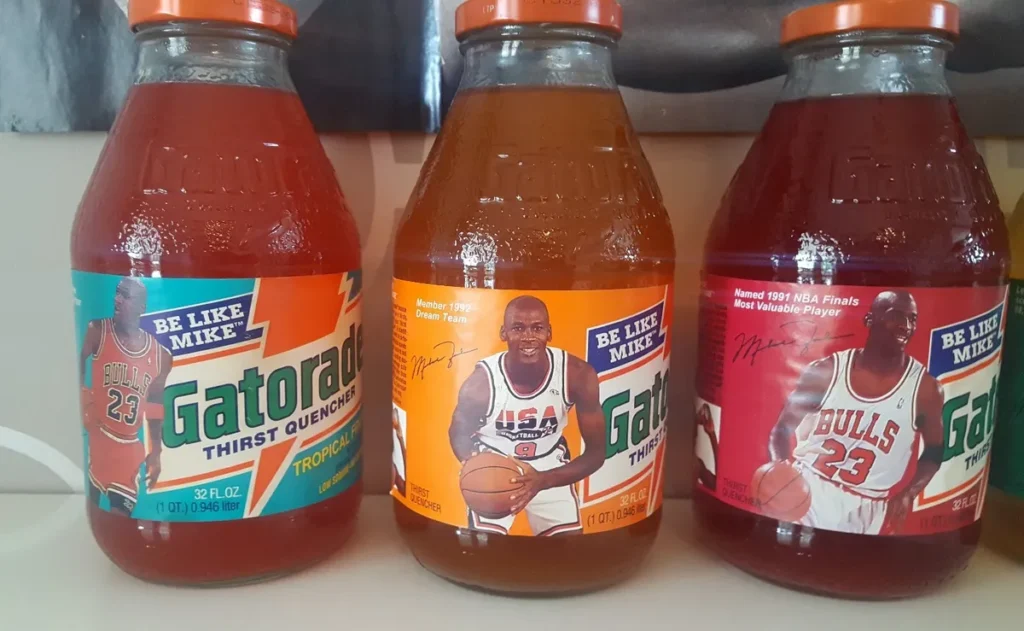
The value of vintage Gatorade glass bottles varies greatly depending on several factors:
Bottle type and condition: Early “Lightning Bottle” designs from the 70s and limited-edition releases tend to be more valuable than common 90s bottles. Bottles with intact labels and minimal wear will also fetch higher prices.
Rarity and demand: Bottles produced in smaller quantities or with unique features can be extremely valuable to collectors. For example, a pristine 1967 “Gatorade Thirst Quencher” bottle recently sold for over $1,000!
Where you sell: Online marketplaces like eBay can attract collectors willing to pay top dollar, while local flea markets or yard sales might bring lower prices.
Generally, expect prices to range from:
- $5-$20 for common 90s bottles in good condition.
- $20-$50 for vintage 70s and 80s bottles with good labels.
- Hundreds or even thousands for rare bottles in exceptional condition or limited-edition sets.
How can you tell how old a glass Gatorade bottle is?
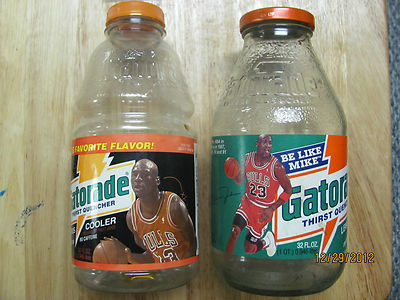
Figuring out the age of a vintage Gatorade glass bottle can be quite fun, like solving a little historical puzzle! Here are some clues to help you:
1. Bottle Design
1960s: “Gatorade Thirst Quencher” bottles were squat and wide-mouthed, with embossed lettering and minimal graphics. Later 60s bottles introduced the iconic lightning bolt.
1970s: The sleek, tapered “Lightning Bottle” became the star, with variations in the lightning bolt graphic and label design throughout the decade.
1980s: The wide-mouthed “Jug” emerged, perfect for sharing. You might also find labels with different color schemes during this time.
1990s: Designs became more varied, with some bottles featuring team logos or special promotions. Look for labels with the PepsiCo logo, as Gatorade was acquired by PepsiCo in 1983.
2. Bottle Markings
Bottom of the bottle: Check for embossed markings, usually near the base. These might include the date of manufacture, a letter code referencing the plant, or even the mold number.
Label information: Some older labels might mention the year or have copyright dates hidden in small print.
Conclusion: When did Gatorade stop using glass bottles
In summary, Gatorade waved goodbye to its iconic glass bottles in the early 2000s, embracing the practicality of plastic bottles. This switch responded to consumer needs, reduced costs, ensured safety, and aligned with growing environmental concerns.
While the charm of glass bottles lingers in memories, Gatorade’s move to plastic reflects its commitment to staying agile and eco-conscious.
The brand’s evolution mirrors broader industry trends, illustrating that even in a simple bottle change, Gatorade continues to adapt, hydrate, and resonate with a dynamic audience.
FAQS
When was Gatorade first sold in Glass bottles?
Gatorade launched in 1965 in paper cartons, not glass bottles. The glass bottles were introduced a few years later, around 1967 or 1968.
Who designed the Gatorade bottle?
The design of the original Gatorade bottle is credited to Robert Cade, the lead researcher and inventor of Gatorade. Dr. Cade, along with his team at the University of Florida, developed Gatorade in 1965 to address dehydration and electrolyte loss in athletes.
The initial packaging for Gatorade included glass bottles, and the design of these early bottles played a crucial role in the drink’s introduction to the market.
What is Vintage Gatorade Glass Bottle History
The vintage Gatorade glass bottle holds a significant place in the brand’s history. Introduced in the mid-20th century, these bottles featured a classic design, often cylindrical, reflecting the simplicity of early beverage packaging.
With iconic labels and the original Gatorade logo, these vintage bottles are prized by collectors, capturing the essence of Gatorade’s early years and its emergence as a sports hydration pioneer.
How was the Old Gatorade Glass Bottle?
The old Gatorade glass bottle was a durable and straightforward container. Characterized by its simplicity, it typically had a cylindrical shape with a screw-on cap, providing a reliable means for athletes to hydrate during sports activities.
The glass material offered sturdiness but also posed weight and fragility challenges. Despite these limitations, the old Gatorade glass bottle became an emblem of victory and hydration during its era.
Old Gatorade Bottle vs. New
Comparing the old Gatorade glass bottle with its modern counterparts reveals a notable evolution. The vintage bottle, primarily made of glass, emphasized functionality over aesthetics.
In contrast, newer Gatorade bottles, often made of plastic, showcase sleek designs, ergonomic shapes, and enhanced portability.
The shift signifies advancements in packaging technology, catering to changing consumer preferences for convenience, safety, and environmental considerations in the contemporary market.
Also Read: What Happens if You Drink Moldy Gatorade?

